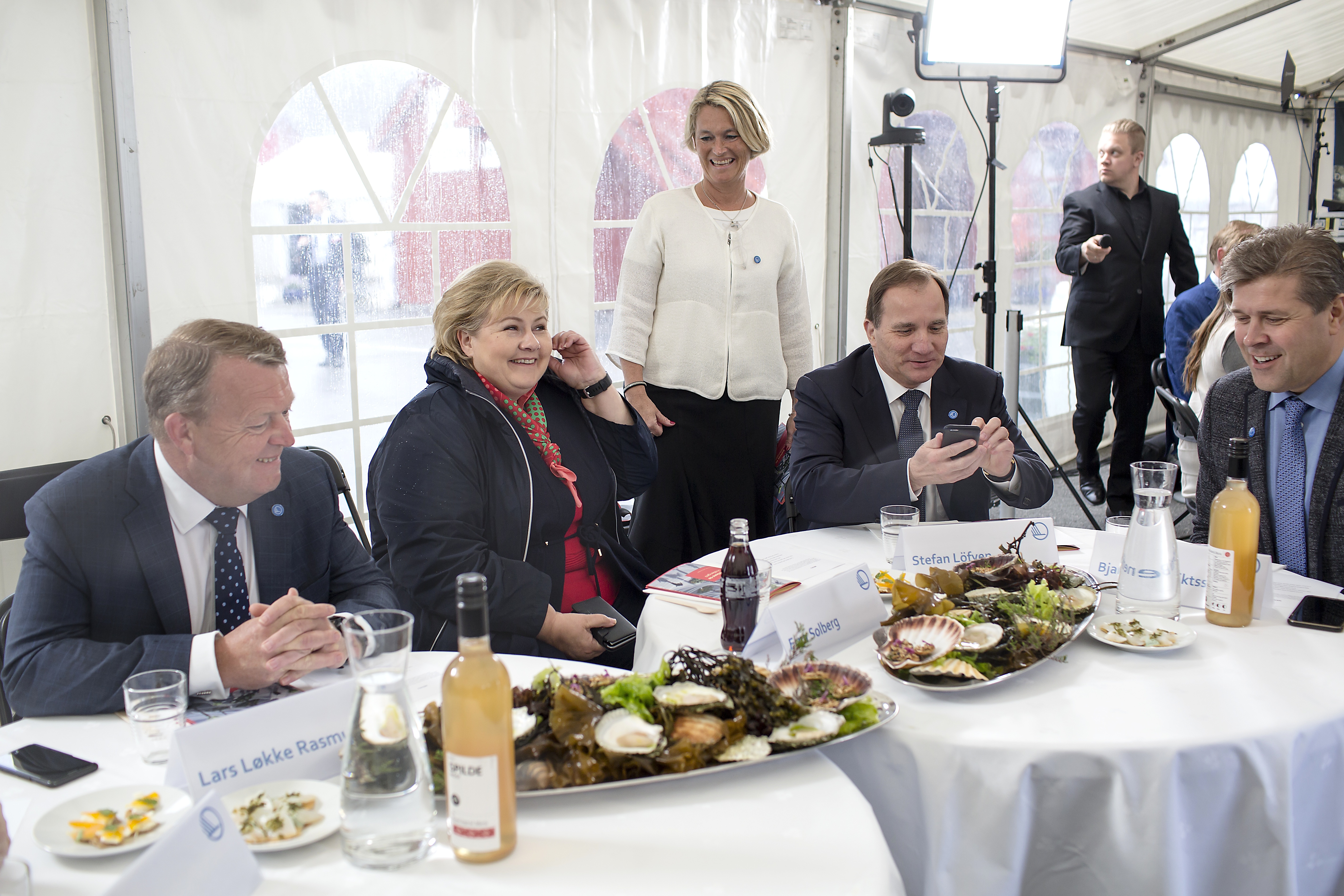As the bumper sticker says: "Mealworms aren't food, mealworms are what food eats".
Or something.
From EU Observer:

Plankton, seaweed and edible insects were on the menu, when the prime
ministers of Finland, Sweden, Denmark,
Iceland and Norway met in
Austevoll, southwest of the city of Bergen in Norway on Tuesday (30
May).
They launched an initiative called Nordic Solutions To Global Challenges, which aims to achieve the UN's sustainable development goals for 2030.
Agriculture is a huge contributor to climate change but, so far, attention has mainly been on limiting carbon emissions from industry and transport.
The Nordic countries now also want to focus on sustainable food production in order to fight climate change.
The prime ministers ate their climate-friendly lunch in a tent outside the Austevoll Research Station, one of Europe’s largest and most advanced research facilities for studies of fish welfare and the ecological effects of aquaculture.
Most experts agree that traditional farming won't produce enough to feed the growing world population in an environmentally responsible way. So, new ways have to be found.
With around 70 percent of the Earth's surface covered by water, it appears logical to explore how much additional food and proteins the oceans could potentially provide in the future.
The Nordic prime ministers got a taste of the changes in diet that lie ahead, when they were served various shellfish, farmed halibut and fried mealworms – all nicely arranged with flowers and edible pine tree needles.
Meet halibut Sophia
The ministers were also presented with Sophia, a 20-year-old enormous halibut, swimming in one of the giant water tanks in the research centre.
In the wild, halibuts rarely live long enough to grow to their full potential weight of 200-300 kilos (for female fish).
Initial results of the Norwegian research show that halibut farming could potentially form the basis for new businesses in Norway, which is in search of ways to replace its weakening oil industry.
”We can manipulate the fish to reproduce as females only, with the advantage that the female halibut fish grow much bigger than the males”, explained one of the researchers at Austevoll Research Station.
The fish can also be genetically engineered so that they are unable to reproduce, which prevents disruptions to the ecosystem in case the engineered fish were to escape into the ocean by mistake.
Norway already has a big industry based on farmed salmon, but this business has reached its limits and the production has been capped. Meanwhile, researchers are looking into ways of solving problems such as fish lice and other issues resulting from intensive fish farming.
”We need to reach a balance and solve the problems, before we can move on,” EUobserver was explained by the researcher at the centre.
China is by far the world's main fish-exporting country, but followed by Norway, Vietnam and Thailand, according to the UN Food and Agriculture Organization's fishery and aquaculture statistics.
Silicon Valley on future food
"I believe the Nordics can become the Silicon Valley of future food," said Gunhild Stordalen, founder of the EAT foundation and one of the driving forces in the coming food revolution.
She reminded the prime ministers that the "way we currently produce and waste our food is far from sustainable ... food production is a main driver of climate change and environmental problems".
"What we need is a coherent food and agricultural policy, linking what we produce to what we should eat," Stordalen said, adding that "unhealthy diets are now posing a greater threat to public health than tobacco"....MORE
Probably related, via Maritime Executive:..."I ate three croutons [with the roasted meal worms]. I've tasted it before .... it is hugely rich in protein and is a relevant, complementary resource," said Loekke Rasmussen.
"But I know things that I like better".
Designing the Largest Seaweed Cultivation Vessel
A new vessel for commercial seaweed production is currently being developed by researchers in Trondheim, in close collaboration with business partners from a variety of sectors.And last year's Shipping: "Got an idle containership? Repurpose it as a salmon farm!".
The vessel, which is still only on the drawing board, will be designed for use during all stages of marine seaweed cultivation. This means that it will be equipped for all operations from the installation of seaweed cultivation facilities, to the transport and sowing of seaweed seedlings and the harvesting and transport of fully-grown plants.
“The driving forces behind this project are the demands of an ever-growing global population for higher levels of exploitation of the oceans in food production. Seaweeds are regarded as an important contribution towards meeting these demands”, says Andreas Myskja Lien, a research scientist at SINTEF.
Commercial seaweed production in Norway currently has a turnover of $140 million, primarily linked to wild algae, and provides jobs for about 400 people. This is estimated to increase to $465 million by 2050.
The new vessel concept will help seaweed cultivation become more efficient, enabling it to be scaled up. Currently, many operations, such as sowing and harvesting, are carried out manually....